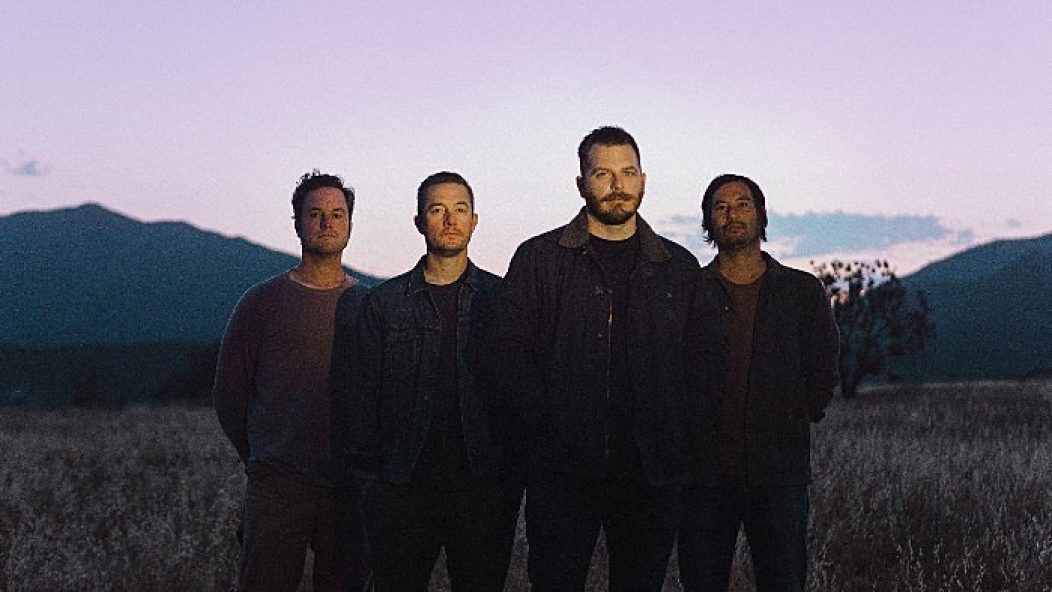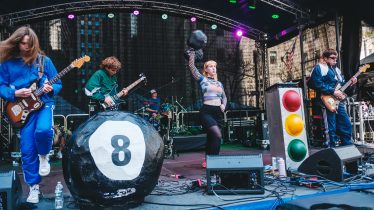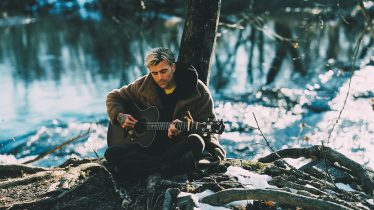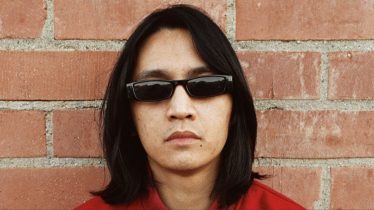
How Thrice challenged themselves like never before on 'Horizons/East'
Thrice have released their 11th studio album, Horizons/East. Ahead of the record, vocalist Dustin Kensrue connected with Alternative Press to offer a preview of the project.
We profiled the record as part of our regular Album Anatomy feature in AltPress’ print magazine. Now, we’re bringing the full conversation, which dives even deeper into the inspiration and goals that shaped the project.
Read more: 1995’s 15 best punk albums heralded a new age of mainstream rock
During the conversation, Kensrue spoke about Thrice’s vision for Horizons/East, which was the product of careful planning and creative thinking. He also detailed the band’s commitment to artistic evolution, the way they challenged themselves (literally!) and the vision that informed the creation of the album’s closer “Unitive.”
I think few bands have evolved as much as Thrice have over the course of your career. Even fewer have managed to reinvent themselves with such success. Was that a commitment you made early on, or did you change naturally along the way?
It’s a combination of things. I think the big thing is that we all are interested in different kinds of music. As we continued playing, we got interested in trying to incorporate different sounds, different textures, different feelings in songs. It didn’t seem exciting to continue to play the same kind of music over and over. It’s very natural for bands to feel a fear of shifting because what you were doing before was working. People were coming to shows, [and] they were buying records, and that creates expectations. For us, it was a very conscious decision to not cater to what someone might expect. As you do that over time, it becomes more and more ingrained to the way you do things, to where you’re not having to be so conscious of it. It happens more naturally.
There are a ton of stories of bands trying to shift and losing momentum. I think a lot of times that happens, they’ve done the same thing for a while and then tried to shift. For us, we were trying to do it from the beginning. I think it’s the consistency of commitment to the ideal. For a lot of people, it starts to build a relationship where you can trust where the band’s going. The other thing is, [when] you make enough records, there’s this pressure of, “This has got to be better.” Who decides what’s better, and what does that mean?
I wanted to ask about “Northern Lights” in particular. As someone with a background in jazz who also loves rock music, I thought the song does a great job of drawing inspiration from both areas while still feeling fresh.
That’s definitely on our mind, too. I didn’t want to just be like, “Hey, here’s a jazz song.” How do we incorporate these things that we really like into the world of things that we’re already doing? We were doing challenges for this record, weird things to bounce ideas off and impose some boundaries or walls to run ideas up against and inspire creativity. Two of those went onto that song. One was making a riff based on the Fibonacci sequence, which is the guitar riff that comes in at the beginning and then comes back later. Another one was using quartal chords, a kind of chord that a lot of jazz musicians started using at a certain point because they’re built on fourths instead of thirds like normal chords. They can float over things a little bit, a little less melodically defined.
Those both are on that song, with the quartal chords you hear the verse floating over this repeating bassline. It was definitely a challenge, especially [because] I’m not used to working with those chords. Trying to sing over it, I was like, “I don’t know how to sing over this.” Taking the time and just trying different things, it came to a place where it’s one of my favorite melodies on the record, the way it interweaves with what’s going on.
Read more: These 10 bands showcase the Ramones’ undying influence on music
It definitely wasn’t a super-quick process to figure out where that one was going. There’s even a mood to that, the verse that feels like you don’t want to get stuck there. Originally, the whole song was in that kind of space. One of the breakthroughs was figuring out when we hit the chorus, let’s actually shift out of these chords and go to something a little more familiar. That’s going to be a bit more emotive and break you out of the space, have a little bit of surprise. I think that was helpful in making it not just feel like this whole thing is this weird jazz experiment. I feel it was successful in finding a way forward that definitely feels jazz-inspired but doesn’t feel like “Thrice Does Jazz.”
Can you tell me more about the challenges you mentioned?
It’s definitely not the main part of the record, but we are also always looking for constraints to put on ourselves. Otherwise, the canvas is infinite, and it’s really hard to figure out what to do, especially when we’ve done a lot of different things. The big example for us is The Alchemy Index, where it’s this very fun but very constraining concept to build a record around. There’s so much creativity that inspires, having to paint with a certain set of lines, and you end up doing things that you wouldn’t have done otherwise in a great way.
We’re always looking for stuff like that. We’ve never been able to find a giant concept that works quite as well. So this time was just the idea of the challenges, just little things to throw out there and be like, “In this song, we’re going to use quartal chords. What’s that going to look like?” Once you’ve committed to that, it’s going to bring a whole different dynamic. Whatever you’re trying to create, it’s going to basically make problems for you that then you creatively solve.
I’m sure it’s also tricky to find a sweet spot that follows the rules but also naturally sounds good. How do you avoid letting the constraints box you in?
I think in the end, the concepts are interesting, but if they don’t end up translating, they’re not going to be something that sticks around. There’s something compelling about listening to “Unitive,” even if you don’t know what’s happening. There’s something interesting happening that pulls you in as much as it’s also a little bit repulsive—in the sense that the chaos is a little unsettling. There is a really strange order that’s prevailing at the same time.
It’s compelling to listen to, whereas there are definitely concepts you can have that don’t pan out. I never actually heard it, but there was a jazz experiment at one point where they had two bands onstage playing separately over each other just to see what that sounded like. I imagine that was not terribly successful. But it’s cool that somebody wanted to try it.
One of the things that jump out to me about the record is the pacing of some of the songs. You build these songs in a really careful way, slowly letting them gradually progress. It’s almost symphonic in its flow.
We’ll use the phrase “cinematic.” We’re very into building things. I think “Color Of The Sky” especially is a fine example, where you don’t get bass and drums until more than a minute into [it]. You don’t get guitars for even longer. It makes it so much more impactful when it finally happens. That’s definitely connected to a bigger piece of just over time, us learning the effectiveness of, “You don’t have to play all the time.” There’s something bigger happening in a song than any of its individual pieces if the song is served by you stopping for a bit or not stopping for a bit.
I also really appreciated the piano textures on the record, which adds a unique sonic register. Was that intentional?
I think it’s more that we’re really always trying to look for the right instrument for the part. The fun thing about the piano is it’s a piano that I bought 15 years ago and never had it tuned when it got moved. I’ve moved like seven times since then, and I still never had it tuned. We played that on the record. It’s definitely not super in tune, but it’s got a cool vibe to it. Usually, the perfect things are not best.
“Scavengers” is also a unique song with a really interesting palette.
That one was actually one of the older developed ideas that we have for the record. I had it way back after Palms was finished. I forgot about it for a while and then found it. There was something to it. I just had the verse, the drum and guitar riff and the melody. I knew there was something compelling about it. It’s always a little bit scary when you have an idea like that, where you’re like, “Hey, I have something here, and now I don’t want to ruin it.” I had to figure out what actually is going to go with it well and hold up to it.
Something I’ve done more on this record than I’ve done anywhere else is try to incorporate pieces of ideas that come out randomly as I’m demoing the songs. I’ll sing nonsense words and try to find the melodies. Sometimes, I’ll end up saying something that’s actually weird or strange or cool. I’ll write out lyrics for a chorus that I want to sing harmonies to, to send to the guys, because it’s hard to harmonize if you don’t have words.
I would write something really quick that would not sound terrible. I’m trying to make it make sense in some way, but I’m also not super worried about it. I think it helped my brain access, “Hey, don’t worry about this so much that you have to figure it out right now.” I wrote that chorus for that purpose and ended up being like, “This is the chorus. I like this.” I think it’s tapping into something deep and subconscious in me, and then I built the song around the images that were inspired by that.
The other track I wanted to ask about is “Unitive.”
That’s one that was very much built out of a challenge. I basically had this idea thinking through interrelatedness, which was a huge theme on the record, the way everything’s connected and thinking through the idea that as much as everything is separated—we have our experience; you have your experience—we’re also all intimately connected, and there’s not really a hard line between anything. There’s a unity in the universe.
Thinking through the connections of those things, I thought it would be interesting to try to write a song that was basically a bunch of times signatures played over each other. It starts with a one, and that’s representing this unitive aspect. Then it adds two on top of it, and then three, and it starts to play off each other and make these cool patterns, and it goes all the way up to 11. Just for fun, since it’s our 11th record. It adds all these in, and then it slowly strips them all back to one. There’s just something interesting that happens in the interplay between all these. There’s a chaos to it, and there’s also an order that emerges as well.








